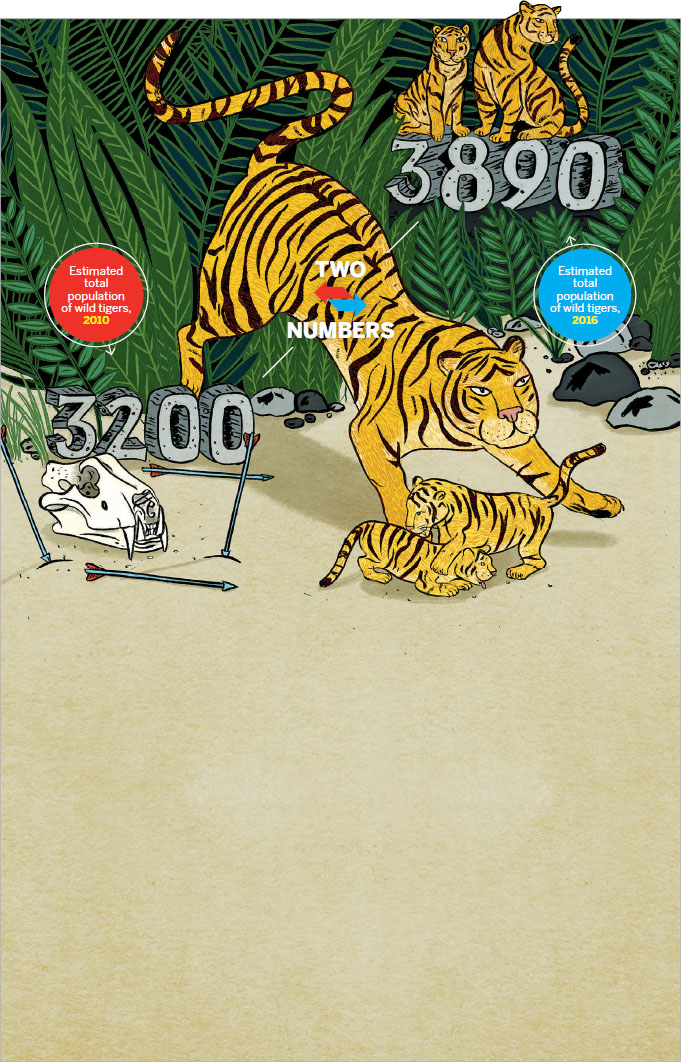
ILLUSTRATION BY VIDHYA NAGARAJAN
For the past century, the number of tigers roaming the Earth has declined precipitously. In 1900, for example, an estimated 100,000 tigers prowled the wilds of Asia, a number that had declined 97 percent by 2010. The big cats are killed primarily by poachers, who seek the animals for their skins, as well as body parts they can sell for use in traditional Chinese medicine, despite zero evidence of medicinal value. Habitat loss also takes a toll, as does conflict with encroaching humans.
There’s finally some good news for these endangered animals: Their population has risen slightly. In 2010, there were an estimated 3,200 tigers in the wild. New estimates suggest that there are now just under 3,900. The increase has primarily been seen in India, Russia, Nepal and Bhutan, says Ginette Hemley, a senior vice president with the World Wildlife Fund, which collated and released the population estimates in April. The improvement has been driven by political commitments—including increased enforcement against poachers and better protections of tiger habitat—especially by Central and South Asian countries with tigers.